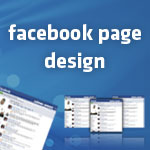SEP
2013
Design & Optimization Tips to Make Your Landing Page CLICK – Part III
Posted by : admin in Landing Page (
Landing Page is being rapidly used by marketers to push for online sales. However, not all Landing Pages are able to achieve the desired levels of conversion or sales targets. There is no sure-shot formula of creating a successful Landing Page. Nevertheless, experts have identified common elements that should be considered while developing a Landing Page to avoid predictable blunders. Here are 20 common Landing Page Design and Optimization Tips.
20 Design and Optimization Tips
1. Consistency: There should be consistency of appearance, layout and message from the advertisement to the subsequent Landing Page. This helps in better communication with the customer as it builds familiarity.
2. Focus: The Landing Page should be specifically focused at a single objective. This keeps the Landing Page uncluttered, devoid of unnecessary distractions that deviates the customer’s attention.
3. Know your customer: The entire campaign revolves around the entity – customer. The message, design elements, call to action – everything about a Landing Page is dependent on who is the target audience. Gathering the demographic profile and segmenting the customers based on certain pre-defined parameters can prove effective in designing separate Landing Page with higher conversion.
4. Headline: A straightforward attention grabbing headline should be used; one that conveys the entire gist of the Landing Page. This helps in conveying the “offer” to the customer and convinces him to read further.
5. Message: Keep the message simple, clear and direct. You must be obvious about what you are offering, how it is going to add value to the customer. Mixed messages are common culprits for Landing Page failure. The strength of the message should be such that it inspires and persuade the customer to act.
6. Single Call to Action (CTA): The adage for any Landing Page – One Objective, One Page, One Message and One Action. No Ambiguity. The customer should not be left to decide and choose. The decision should be pre-decided. Hence, the customer either Purchases or does not.
7. Fold Area: This is a design aspect. A reader’s attention is mostly concentrated within this area. The Call to Action and all essential details should be above the fold area.
8. Page Length: Most often professional Landing Page copywriters are employed to create content that is brief, effective and sharp. This keeps the page length short and does not require the reader to scroll which is often a turnoff. The entire message is thus, contained within the fold area.
9. Physical Layout: There is no dispute that the message is of prime importance but the visual appeal of the page bears equal importance. Often a very good and honest message is diluted by the accompanying unimpressive page layout, fonts, color scheme and graphics. Pop-ups are also outcastes. Never use them. There is also a growing trend of using smart phones and tablets to access websites. Thus, it is vital that the Landing Page design takes into consideration this growing paradigm shift.
10. Credibility: People are comfortable making purchases when they are presented with credentials, testimonials and customer comments that instill faith.
11. Honesty: Be honest about the product or service’s capability, features and benefits. These days average customer is very informed. Online media is vicious and viral. If a company is caught making wrong claims (which they will be), it will be torn apart endlessly. This will tarnish the brand image and at times beyond repair. Avoid bad publicity at all cost.
12. Data: Do not burden the customer with too many questions. Gather only relevant information that empowers you to enrich your marketing campaign and create an effective message.
13. Security and Trust: Put forward an outright assurance of privacy and security. State clearly that any data that is collected will never be used for any other purpose or without explicit permission of the owner. Use of secure seals like Verisign/ VISA etc infuses trust in the mind of the customer. He/ She feels secure in sharing personal details, credit card information in such sites.
14. Legal Language: Sometimes complicated legal lingo scares customers away from making a purchase. Keep the legal disclaimers simple and understandable for a layman.
15. Freebies: It has been found that freebies of any kind attract more customers as compared to discounts. At the end of successful completion of CTA offer a freebie. It can be an eBook, whitepaper, report, template file, presentation, trial period sample or usage of a product or service. Anything that shows gratitude for the customer’s time and efforts.
16. Testing: Experts opine that testing of Landing Page is often neglected citing cost and outcome. This is the biggest blunder one can commit. Testing helps calculate the ROI of a campaign. It provides irrefutable data. A Landing Page should be continuously tested to check what works and why. Change in content, layout, color etc should be tested rigorously and results stored to create a knowledge bank for reference. Copywriters often test pages with a closed group of respondents to gather their perception on which one is most effective. It is advisable to develop a checklist for testing. A/B testing is one of the commonly employed methods for testing. Multivariate testing is also used. Tim Ash has written about Common Landing Page Optimization Errors.
17. Conversion Rate: The purpose of any testing is to calculate conversion rate. This figure depends on factors like the message, physical layout, freebies offered, even the technical aspect of how fast the Landing Page loads after clicking on an advertisement. Conversion rate increases with increase in visitors who opt to buy and become customers. The campaign should clearly state the expected conversion rate to ascertain its success and effectiveness.
18. Google Analytics: This feature by Google is very handy for testing various Landing Page metrics like conversion and bounce rates. The result is helpful in improving the features of a page.
19. SEO Landing Page: In case of organic landing pages where your objective is to drive targeted traffic from search engines, make sure that pages are properly optimized as per SEO guidelines including keyword placements so that, combined with off-page efforts, the chances of those pages ranking high for relevant keywords may increase significantly.
20. Contact Information: Landing Page MUST carry detailed contact information in case the customer wishes to contact the company for any purpose. Website URL, email id, address, phone and facsimile numbers.
A Landing Page is designed with a very specific narrow objective. There is little scope for it to go wrong. A good Landing Page means higher customer traffic, more conversion, higher ROI. This clearly calls for a professional copywriter experienced in creating effective Landing Pages to spearhead your marketing objective.
Send us your existing Landing Page for a FREE Landing Page Analysis Report. We’ll let you know the shortfalls and ways to improve the performance of your landing page. What are you waiting for? Email us at info@enablingbiz.com now!
You can read the part I and Part II of this three-part article series here: Definition and Types of Landing Pages and Benefits and Importance of Landing Pages
Read More













